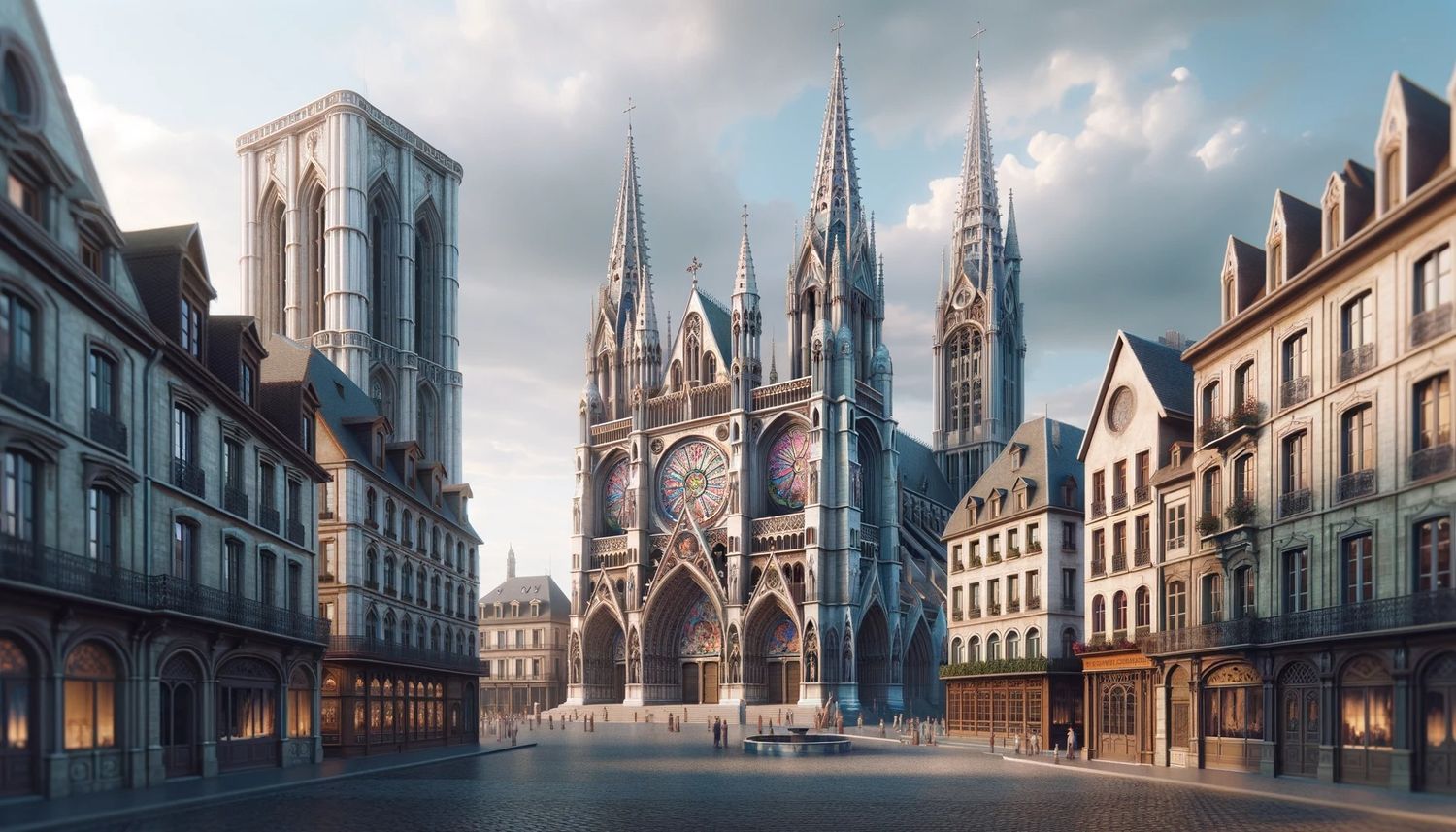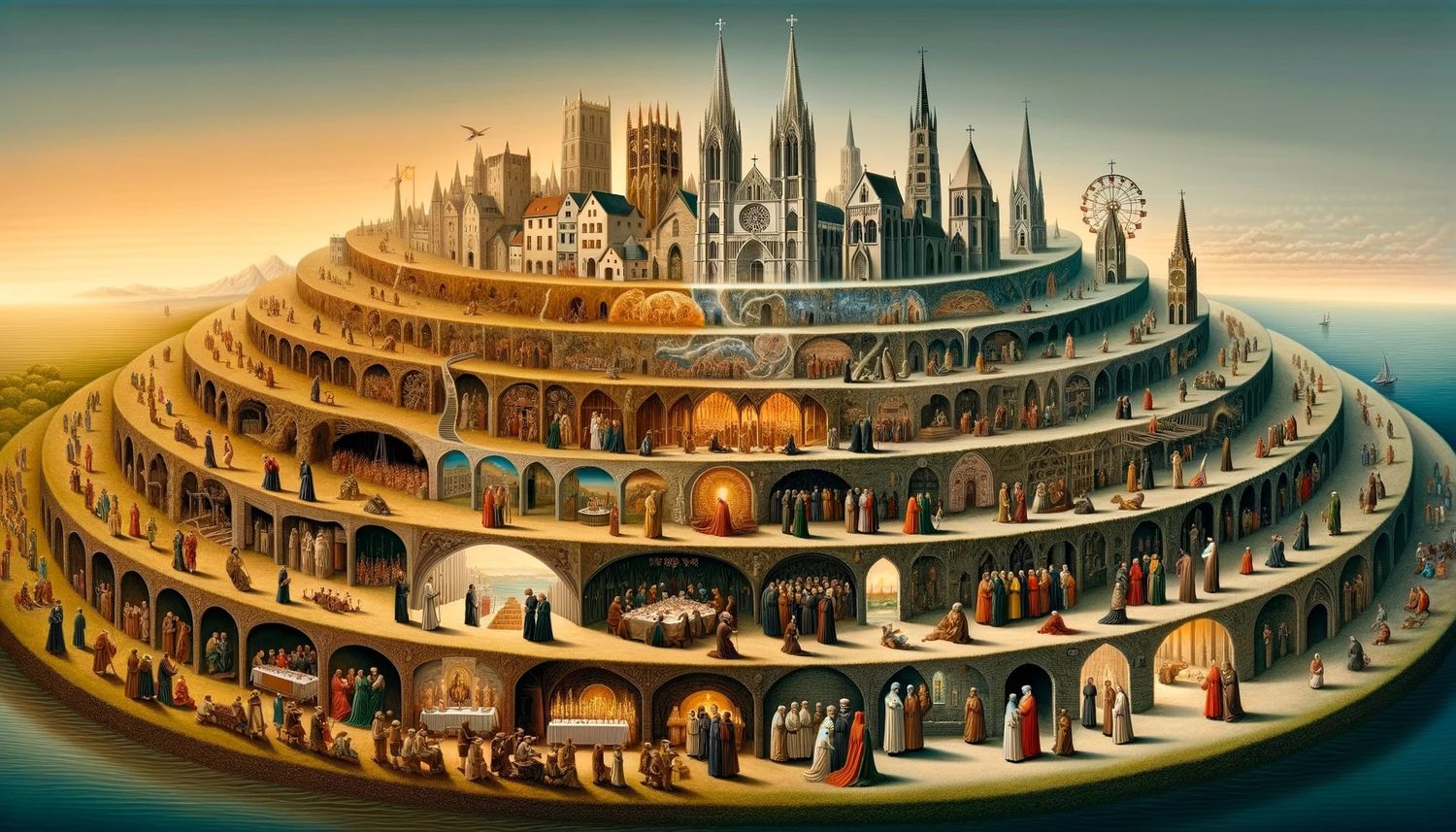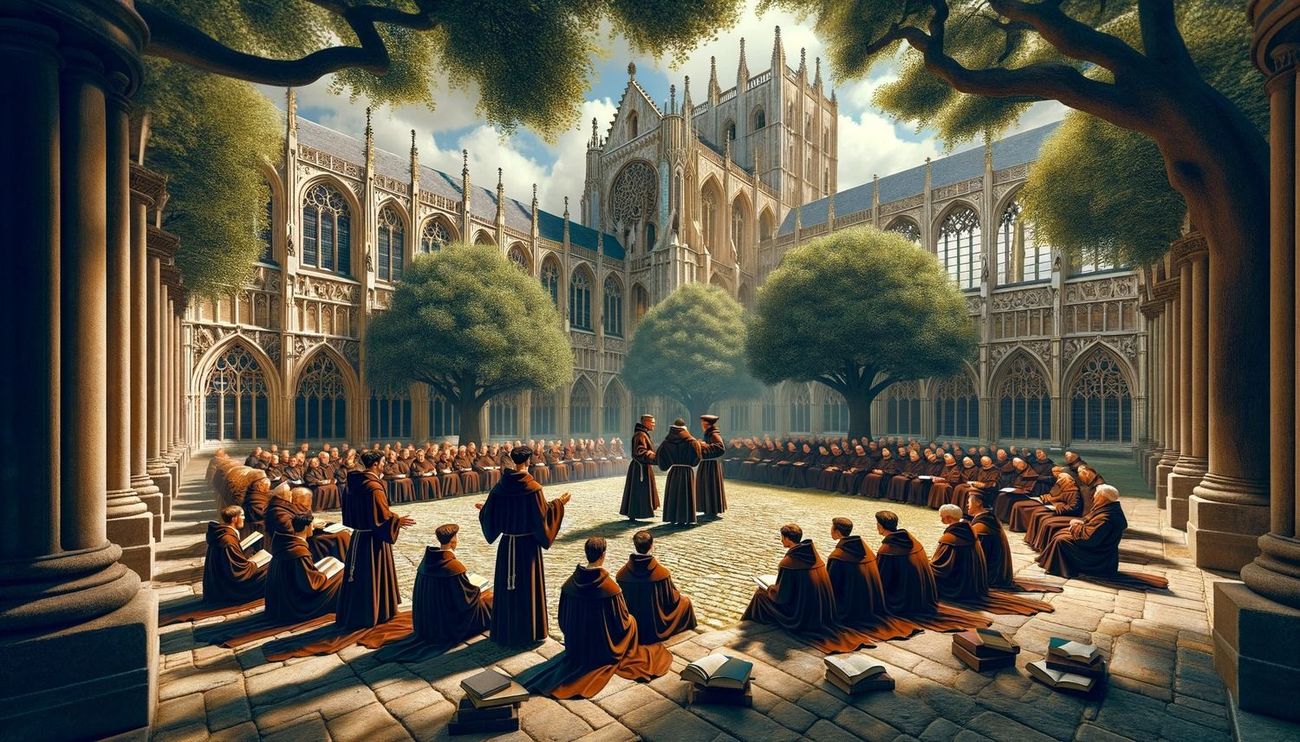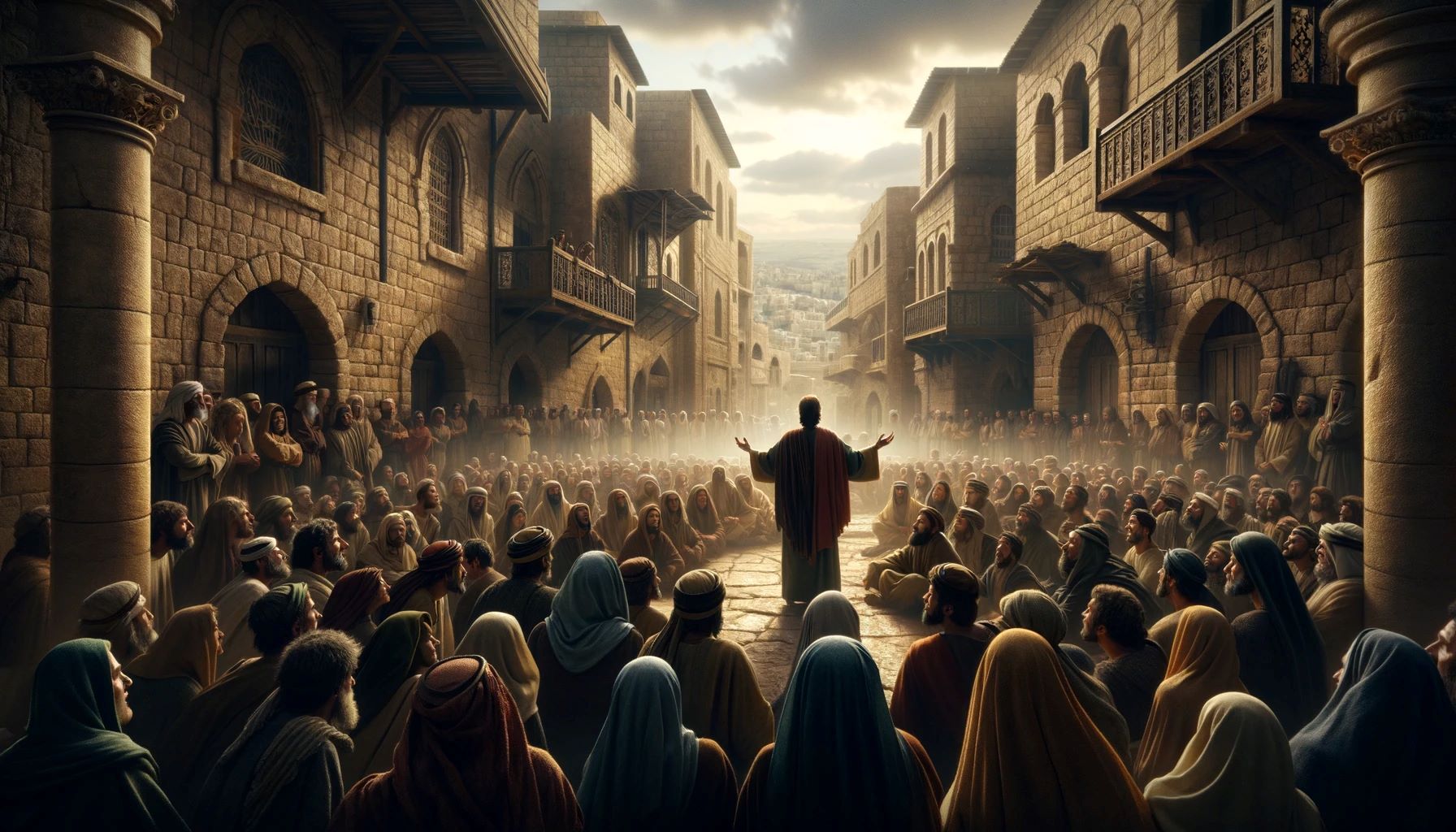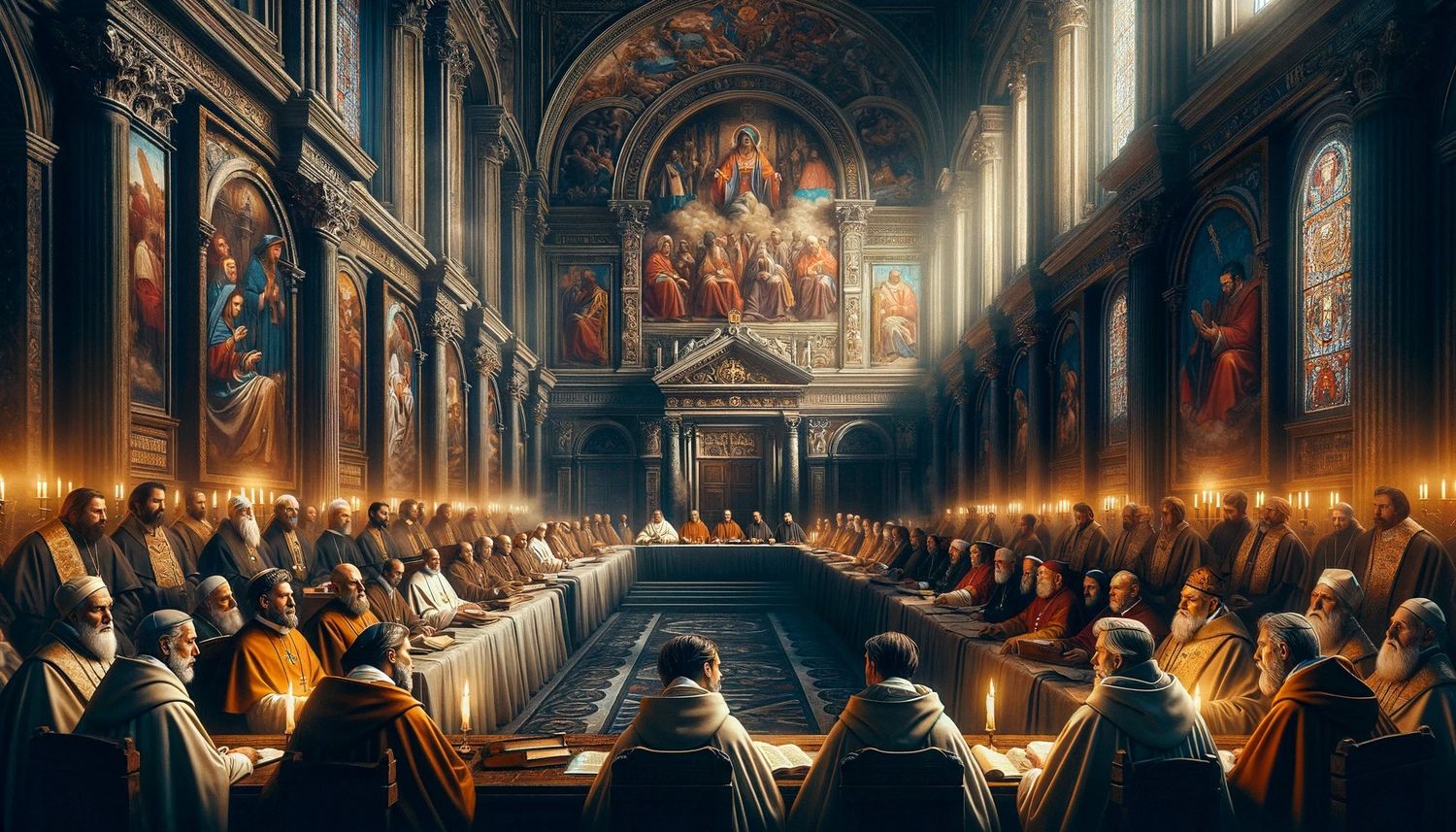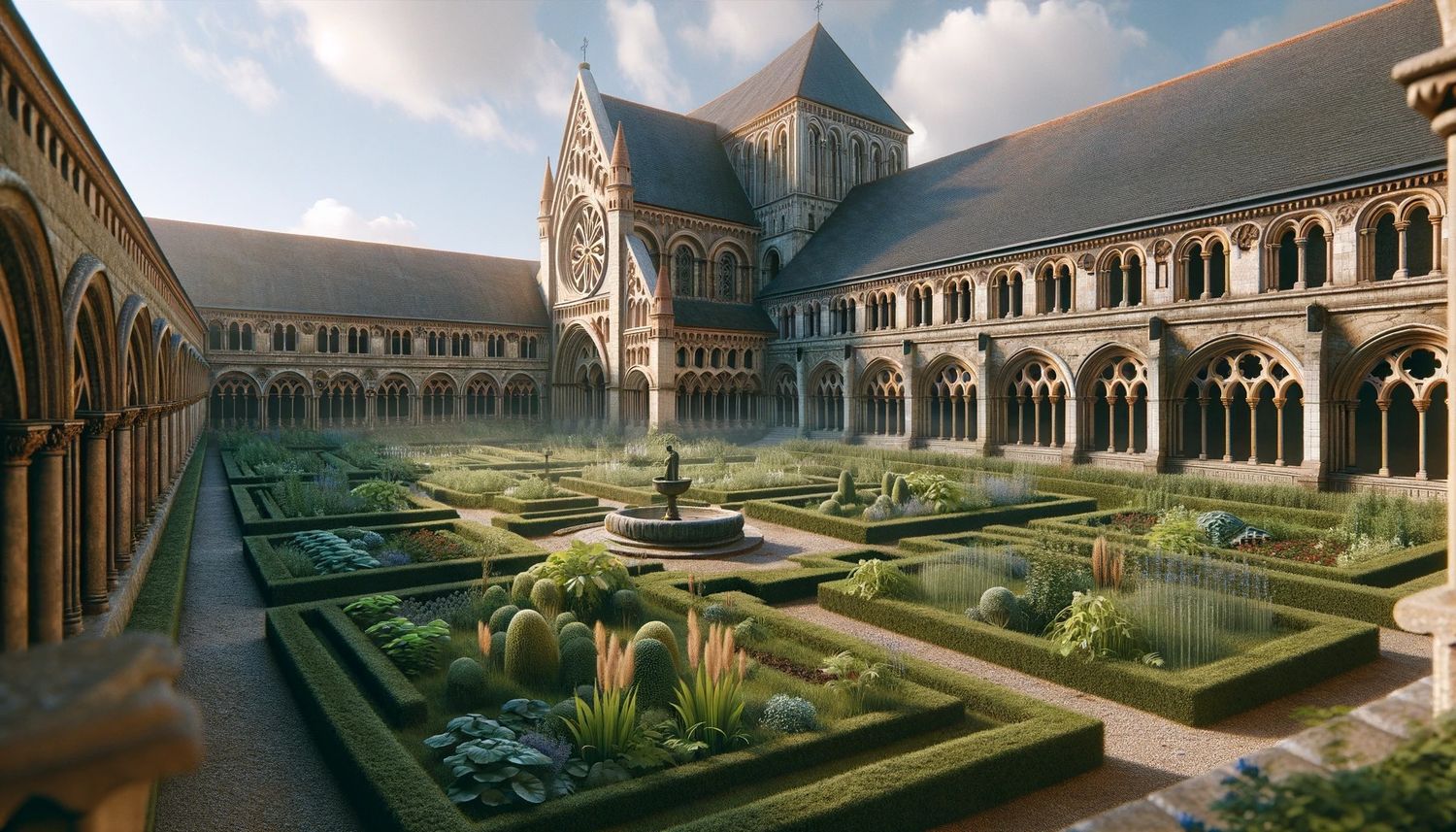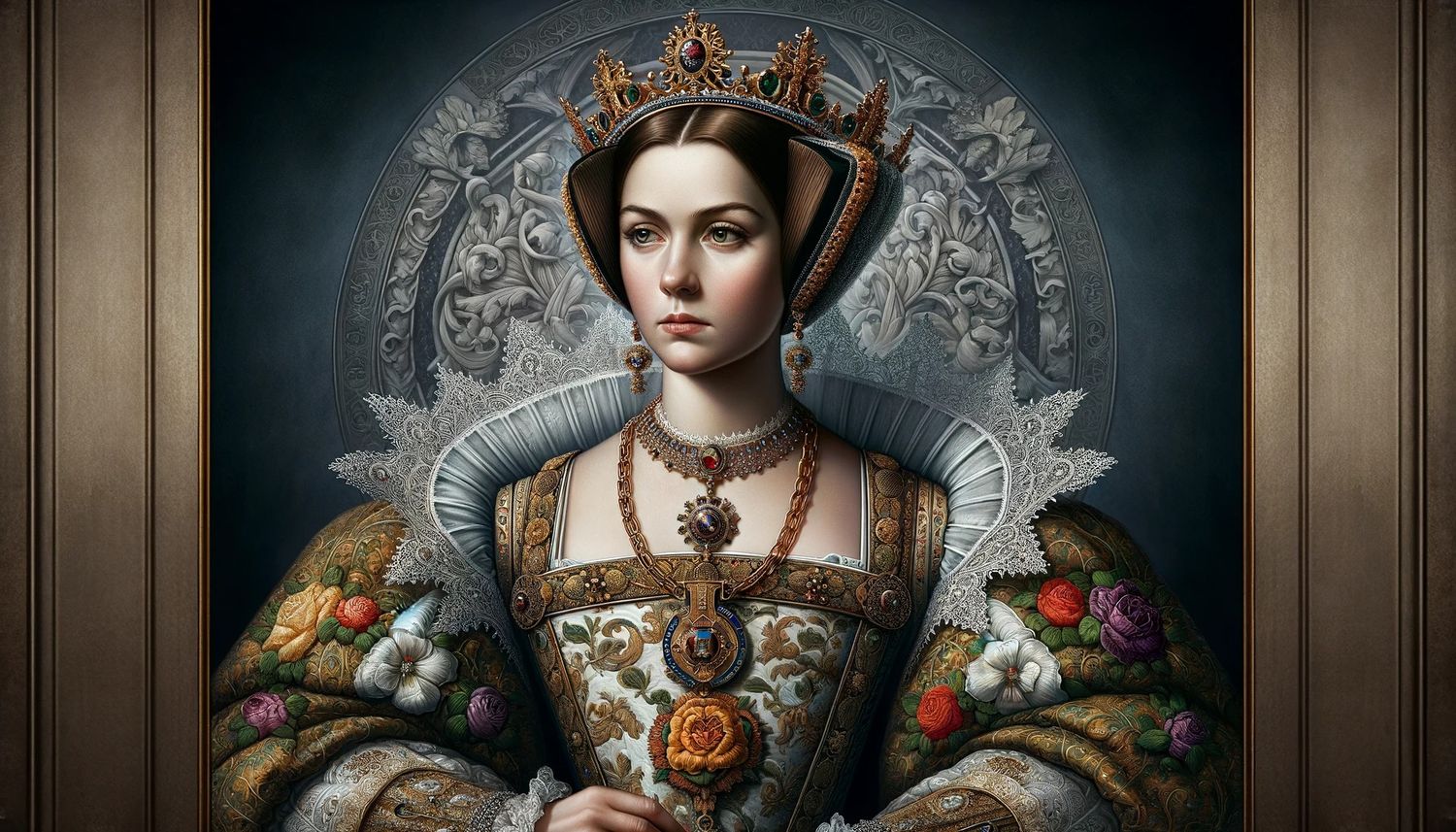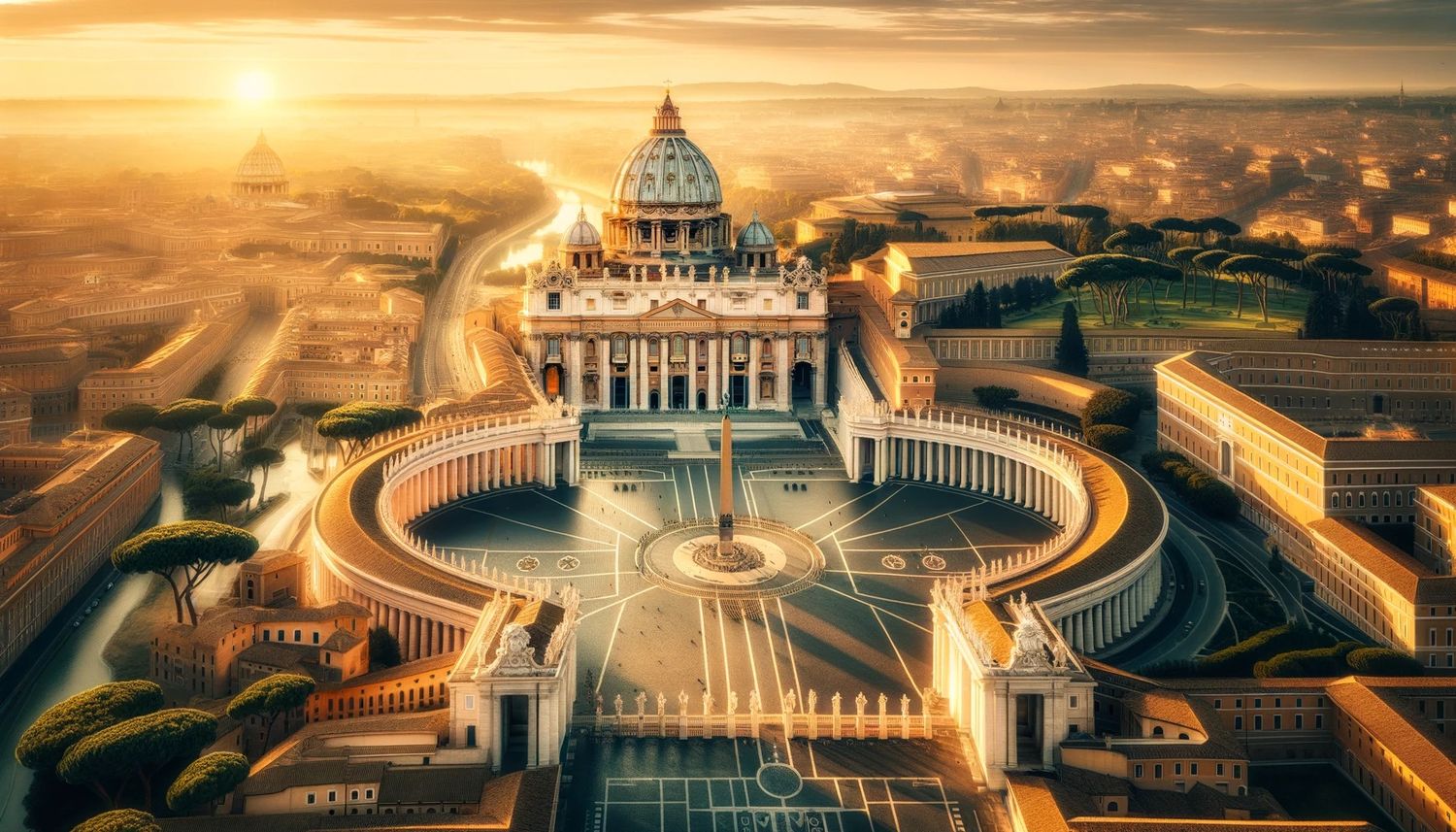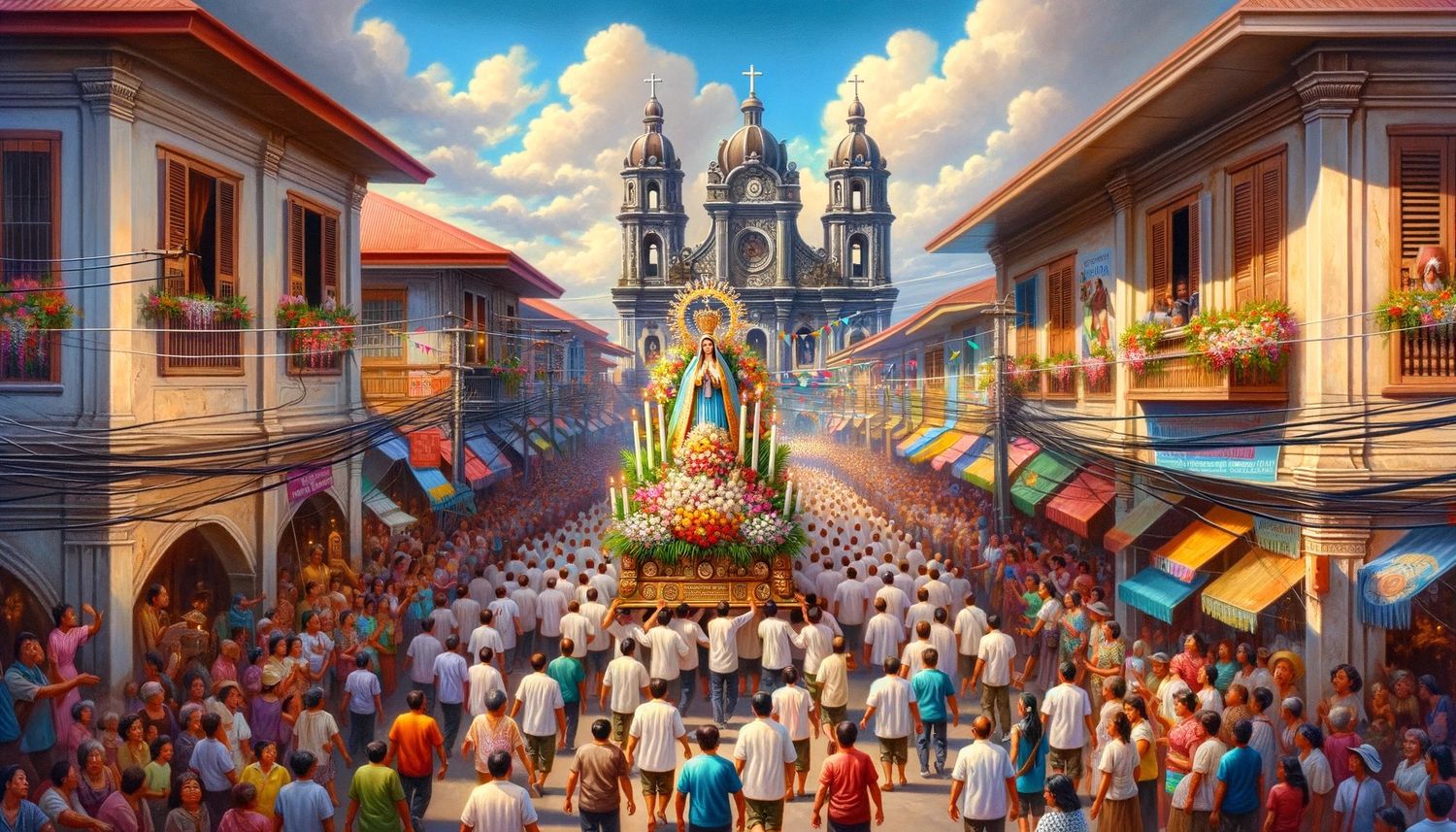Home>Theology and Spirituality>How Did Roman Catholicism Spread To The New World


Theology and Spirituality
How Did Roman Catholicism Spread To The New World
Published: February 15, 2024
Peter Smith, Editorial Director at Christian.net, combines deep insights into faith, politics, and culture to lead content creation that resonates widely. Awarded for his contributions to religious discourse, he previously headed a major organization for religious communicators, enhancing dialogue on faith's societal impacts.
Discover the fascinating spread of Roman Catholicism to the New World and its impact on theology and spirituality. Explore the historical journey and cultural significance.
(Many of the links in this article redirect to a specific reviewed product. Your purchase of these products through affiliate links helps to generate commission for Christian.net, at no extra cost. Learn more)
Table of Contents
Introduction
The spread of Roman Catholicism to the New World is a fascinating and complex historical phenomenon that significantly impacted the religious, cultural, and social landscape of the Americas. This religious expansion was intricately intertwined with the age of exploration and colonization, as European powers sought to expand their influence and establish a foothold in the uncharted territories across the Atlantic. The arrival of Spanish explorers and conquistadors in the late 15th and early 16th centuries marked the beginning of a profound and enduring encounter between the indigenous peoples of the Americas and the Catholic faith.
The journey of Roman Catholicism to the New World was not merely a religious endeavor; it was deeply intertwined with the broader historical context of European expansion and the quest for wealth, power, and territorial dominion. As the Spanish Empire embarked on ambitious voyages of discovery, the propagation of the Catholic faith became a central element of their colonial enterprise. The missionaries and conquistadors who ventured into the New World carried with them not only the aspirations of empire but also the fervent zeal to spread the teachings of Christianity to the indigenous populations they encountered.
The impact of Roman Catholicism on the New World was profound and multifaceted, shaping the spiritual beliefs, social structures, and cultural practices of the indigenous peoples and the subsequent generations of settlers. The establishment of Catholic missions, the construction of churches and cathedrals, and the conversion of indigenous communities all contributed to the enduring legacy of Catholicism in the Americas.
As we delve into the historical narrative of how Roman Catholicism spread to the New World, it is essential to explore the pivotal role of early Spanish exploration and colonization, the influence of missionaries and conquistadors, the establishment of Catholic missions and churches, the conversion of indigenous peoples, and the far-reaching impact of Catholicism on the societies of the New World. This exploration will provide valuable insights into the intricate interplay of religion, power, and cultural exchange that characterized this transformative period in history.
Early Spanish Exploration and Colonization
The early Spanish exploration and colonization of the New World laid the foundation for the introduction and dissemination of Roman Catholicism in the Americas. In the late 15th century, under the patronage of the Spanish Crown, explorers such as Christopher Columbus embarked on voyages across the Atlantic, seeking new trade routes and territories. The arrival of Columbus in the Caribbean in 1492 marked the beginning of sustained European contact with the indigenous peoples of the Americas.
The Spanish Crown, driven by a potent blend of religious fervor and imperial ambition, authorized subsequent expeditions to expand its territorial holdings and spread the Catholic faith. The explorers and conquistadors who followed in the wake of Columbus, including Hernán Cortés in Mexico and Francisco Pizarro in Peru, were instrumental in advancing the Spanish conquest and colonization of the New World. These ventures were characterized by a complex interplay of exploration, conquest, and the imposition of Spanish authority over indigenous societies.
The Spanish colonization efforts were closely intertwined with the propagation of Roman Catholicism. Spanish missionaries, including members of religious orders such as the Franciscans, Dominicans, and Jesuits, accompanied the expeditions to the New World. Their primary objective was to evangelize the indigenous populations and convert them to the Catholic faith. The missionaries viewed the spread of Christianity as a divine mandate, essential for the salvation of the indigenous souls and the extension of Spanish influence in the newly discovered territories.
The establishment of Spanish colonies in regions such as present-day Mexico, Central America, and South America facilitated the construction of churches, monasteries, and religious institutions. These served as centers for religious instruction, conversion, and the consolidation of Spanish authority. The fusion of Spanish colonial administration with the ecclesiastical hierarchy created a powerful alliance that exerted significant influence over the spiritual and temporal affairs of the indigenous peoples.
The early Spanish exploration and colonization of the New World thus set in motion a profound and enduring encounter between European Catholicism and the diverse indigenous cultures of the Americas. This pivotal period laid the groundwork for the subsequent spread and entrenchment of Roman Catholicism in the New World, leaving an indelible imprint on the religious, cultural, and historical fabric of the Americas.
Role of Missionaries and Conquistadors
The role of missionaries and conquistadors was pivotal in the spread of Roman Catholicism to the New World. As Spain sought to expand its influence and consolidate its territorial holdings in the Americas, missionaries played a central role in advancing the Catholic faith among the indigenous populations. These dedicated men, often members of religious orders such as the Franciscans, Dominicans, and Jesuits, embarked on arduous journeys to the New World, driven by a fervent zeal to evangelize and convert the indigenous peoples.
The missionaries faced formidable challenges as they endeavored to spread Christianity in unfamiliar and often hostile environments. They grappled with linguistic and cultural barriers, seeking to communicate the teachings of the Catholic faith in languages previously unknown to them. Despite these obstacles, the missionaries demonstrated remarkable resilience and adaptability, employing innovative methods of evangelization that resonated with the indigenous populations. They often incorporated indigenous languages, symbols, and rituals into their religious instruction, seeking common ground to convey the message of Christianity.
In addition to their spiritual endeavors, missionaries played a multifaceted role in the colonial enterprise. They served as intermediaries between the Spanish authorities and the indigenous communities, advocating for the protection of indigenous rights and the mitigation of exploitative practices. While their efforts were not always successful in curbing the excesses of colonial exploitation, the missionaries' advocacy reflected a genuine concern for the welfare of the indigenous peoples.
The conquistadors, on the other hand, wielded military might and political influence as they spearheaded the Spanish conquest and colonization of the New World. Their motivations were often driven by a quest for wealth, glory, and territorial expansion. While their methods were frequently marked by coercion and violence, the conquistadors' actions were intricately linked to the propagation of Roman Catholicism. They viewed their conquests as a means to extend the influence of Christianity and bring the indigenous populations under the fold of the Catholic Church.
The convergence of the missionary zeal and the conquistadors' quest for dominion resulted in a complex and at times contentious relationship between the two groups. While the missionaries sought to protect the indigenous peoples from the worst abuses of the conquistadors, they also relied on the military and political power of the Spanish forces to advance their evangelistic efforts.
Overall, the combined efforts of missionaries and conquistadors played a decisive role in the dissemination of Roman Catholicism in the New World. Their interactions with the indigenous populations, marked by cultural exchange, conflict, and accommodation, shaped the religious and historical trajectory of the Americas, leaving a lasting legacy that endures to this day.
Establishment of Catholic Missions and Churches
The establishment of Catholic missions and churches in the New World was a defining feature of the Spanish colonial enterprise and the spread of Roman Catholicism. As the Spanish Empire expanded its territorial reach across the Americas, the construction of missions and churches served as tangible symbols of both religious devotion and imperial authority.
Spanish missionaries, driven by a fervent zeal to evangelize the indigenous populations, played a central role in the establishment of Catholic missions. These missions, often located in remote and frontier regions, served as centers for religious instruction, conversion, and the integration of indigenous communities into the Catholic faith. The missionaries, including members of religious orders such as the Franciscans, Dominicans, and Jesuits, undertook the arduous task of building relationships with the indigenous peoples, learning their languages, and adapting their evangelistic methods to resonate with the local cultures.
The missions were not only sites of religious activity but also served as hubs for agricultural development, education, and the introduction of European technologies and practices. The missionaries sought to impart not only the tenets of Christianity but also to instill Spanish cultural norms and social structures among the indigenous populations. This multifaceted approach aimed to create cohesive, Christianized communities that aligned with the broader objectives of Spanish colonial expansion.
In addition to the missions, the construction of churches and cathedrals in urban centers and established settlements became a visible manifestation of Spanish religious and political authority. These grand edifices, often adorned with ornate decorations and religious iconography, symbolized the triumph of Catholicism and the enduring presence of the Spanish Crown in the New World. The churches served as focal points for religious ceremonies, processions, and the dissemination of Catholic rituals and sacraments, further solidifying the influence of the Catholic Church in the daily lives of the colonial subjects.
The establishment of Catholic missions and churches thus represented a convergence of religious, cultural, and political agendas in the New World. The physical presence of these religious institutions not only facilitated the spread of Roman Catholicism but also served as instruments of social control, cultural assimilation, and the assertion of Spanish hegemony over the indigenous populations. The enduring legacy of these missions and churches continues to resonate in the architectural heritage, religious practices, and cultural landscapes of the Americas, underscoring the profound impact of Roman Catholicism on the New World societies.
Conversion of Indigenous Peoples
The conversion of indigenous peoples to Roman Catholicism in the New World was a complex and multifaceted process that unfolded against the backdrop of cultural exchange, religious syncretism, and the dynamics of colonial power. Spanish missionaries, driven by a fervent zeal to spread the Catholic faith, embarked on a mission to evangelize and convert the indigenous populations they encountered. This endeavor was marked by a convergence of religious fervor, cultural adaptation, and the imposition of Spanish colonial authority.
The missionaries employed various strategies to convey the message of Christianity to the indigenous peoples, recognizing the need to bridge linguistic and cultural barriers. They often utilized indigenous languages, symbols, and rituals to contextualize the Christian teachings, seeking common ground to establish a rapport with the local communities. This approach facilitated a degree of cultural accommodation, allowing for the incorporation of indigenous beliefs and practices within the framework of Roman Catholicism.
The process of conversion, however, was not devoid of coercion and power dynamics. The missionaries operated within the broader context of Spanish colonial expansion, where the imposition of Catholicism was intricately linked to the consolidation of Spanish authority. The indigenous populations, facing the pressures of colonial subjugation and cultural upheaval, navigated the complexities of embracing a foreign faith while grappling with the erosion of their traditional belief systems.
The impact of conversion reverberated across the social and cultural fabric of indigenous societies. The adoption of Catholicism brought about profound transformations in religious practices, social structures, and communal identities. Indigenous communities, in embracing Christianity, often underwent a process of syncretism, blending elements of their traditional beliefs with the tenets of Roman Catholicism. This syncretic fusion gave rise to unique religious expressions and cultural traditions that reflected the interplay of indigenous and Catholic influences.
The conversion of indigenous peoples to Roman Catholicism thus unfolded as a dynamic and contested phenomenon, shaped by the interweaving forces of religious evangelization, cultural adaptation, and colonial hegemony. The enduring legacy of this process is evident in the religious practices, artistic expressions, and cultural heritage of the Americas, underscoring the enduring impact of Roman Catholicism on the spiritual and cultural landscapes of the New World.
Read more: Where Did Catholicism Spread
Impact of Roman Catholicism on New World Societies
The impact of Roman Catholicism on the societies of the New World was profound and far-reaching, leaving an indelible imprint on the religious, cultural, and social fabric of the Americas. As the Catholic faith took root and flourished in the diverse landscapes of the New World, it engendered a complex tapestry of transformations that reshaped the spiritual beliefs, social structures, and communal identities of the indigenous populations and the subsequent generations of settlers.
Spiritual and Religious Transformations
Roman Catholicism exerted a transformative influence on the spiritual landscape of the New World societies. The introduction of Christian doctrines, sacraments, and religious rituals supplanted indigenous belief systems and cosmologies, redefining the spiritual paradigms of the native populations. The veneration of saints, the celebration of Catholic feast days, and the establishment of religious processions and pilgrimages became integral facets of the religious life in the New World. The fusion of indigenous spiritual practices with Catholic traditions gave rise to syncretic forms of worship, manifesting in the rich tapestry of religious expressions that characterized the New World societies.
Social and Cultural Reconfigurations
The diffusion of Roman Catholicism precipitated profound social and cultural reconfigurations within the New World societies. The establishment of Catholic missions, churches, and religious institutions served as focal points for community gatherings, social cohesion, and the transmission of cultural values. The missionaries, in their efforts to evangelize and educate the indigenous populations, introduced European languages, literacy, and artistic expressions, contributing to the emergence of new cultural syntheses. The visual arts, music, and religious iconography became intertwined with indigenous artistic traditions, giving rise to a vibrant visual and performative culture that reflected the interplay of Catholic and indigenous influences.
Ethical and Moral Frameworks
The ethical and moral frameworks of the New World societies underwent significant transformation under the influence of Roman Catholicism. The Catholic emphasis on charity, compassion, and social justice engendered new ethical imperatives that permeated the social consciousness of the colonial subjects. The missionaries, while promoting the Christian virtues of humility and piety, also advocated for the protection of indigenous rights and the alleviation of their suffering. This ethical paradigm, albeit imperfectly realized in the colonial context, contributed to the emergence of discourses on human dignity, social responsibility, and the rights of indigenous peoples.
Enduring Legacy
The enduring legacy of Roman Catholicism in the New World is evident in the religious practices, cultural expressions, and historical narratives that continue to shape the identities of the Americas. The Catholic faith, with its complex interplay of continuity and adaptation, has become an integral part of the cultural heritage and collective memory of the New World societies. The architectural marvels of colonial churches, the vibrant traditions of religious festivals, and the resilience of indigenous spiritual beliefs all bear testament to the enduring impact of Roman Catholicism on the diverse tapestry of the Americas.
In essence, the impact of Roman Catholicism on the New World societies transcends mere religious diffusion; it encompasses a profound and multifaceted legacy that resonates in the spiritual, cultural, and historical contours of the Americas.
Conclusion
The spread of Roman Catholicism to the New World stands as a testament to the intricate interplay of religious fervor, imperial ambition, and cultural exchange that characterized the age of exploration and colonization. The arrival of Spanish explorers and conquistadors in the Americas heralded a transformative encounter between European Catholicism and the indigenous societies, giving rise to a complex tapestry of religious, cultural, and historical legacies that endure to this day.
The early Spanish exploration and colonization of the New World laid the foundation for the introduction and dissemination of Roman Catholicism. The missionaries and conquistadors, driven by a potent blend of religious zeal and imperial aspirations, played pivotal roles in advancing the Catholic faith among the indigenous populations. The establishment of Catholic missions and churches, often accompanied by the fusion of indigenous and Catholic traditions, served as tangible symbols of Spanish religious and political authority, shaping the spiritual and cultural landscapes of the Americas.
The conversion of indigenous peoples to Roman Catholicism unfolded as a dynamic and contested process, marked by cultural accommodation, religious syncretism, and the complexities of colonial power dynamics. The impact of Catholicism on the New World societies reverberated across the spiritual, cultural, and social realms, engendering profound transformations in religious practices, social structures, and communal identities. The enduring legacy of Roman Catholicism in the Americas is evident in the vibrant religious expressions, cultural traditions, and historical narratives that continue to shape the identities of the diverse tapestry of the Americas.
In essence, the spread of Roman Catholicism to the New World represents a chapter in history that encapsulates the complexities of cultural encounter, religious diffusion, and the enduring resilience of indigenous traditions. The legacy of Catholicism in the Americas transcends mere religious diffusion; it encompasses a profound and multifaceted heritage that resonates in the spiritual, cultural, and historical contours of the New World. As we reflect on this historical narrative, we are reminded of the enduring impact of Roman Catholicism on the diverse tapestry of the Americas, underscoring the intricate interplay of religion, power, and cultural exchange that continues to shape our understanding of the New World's rich and complex history.
